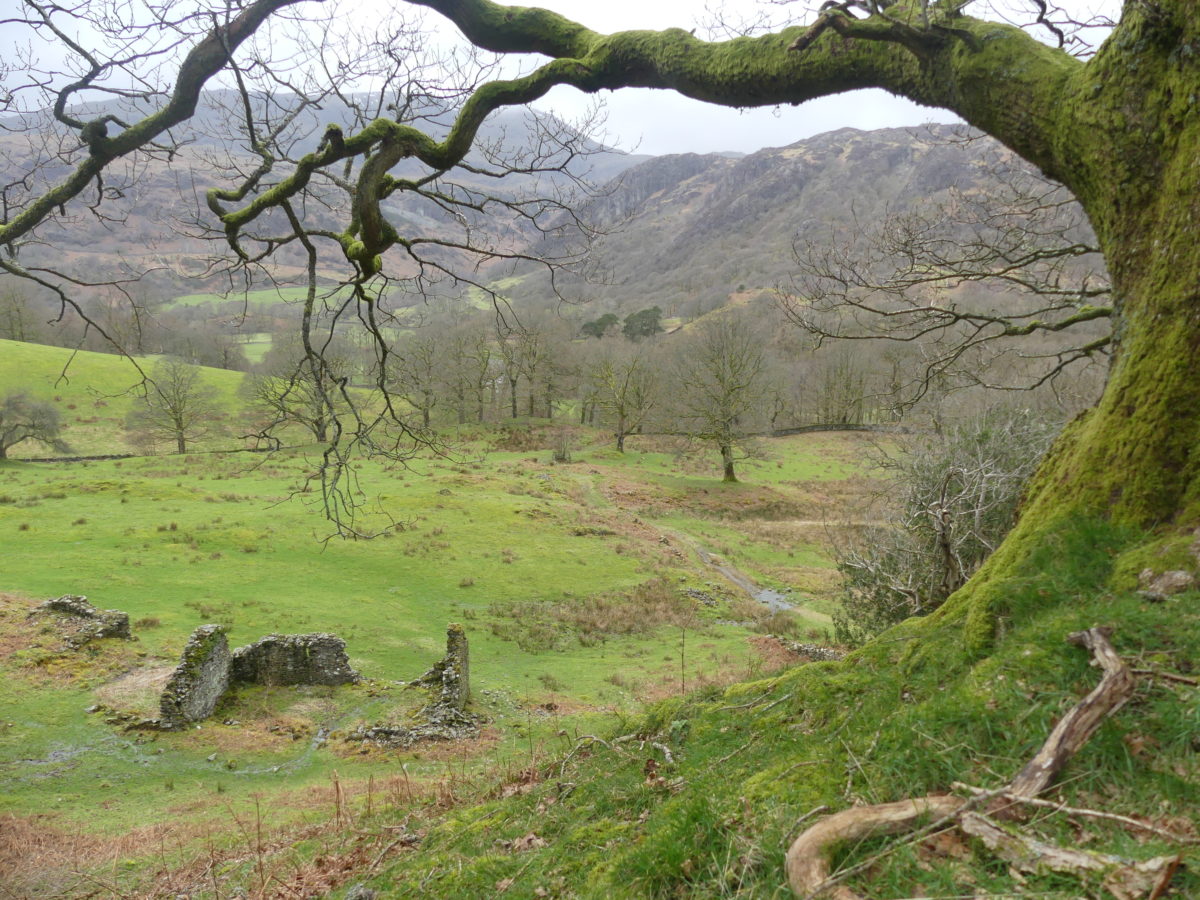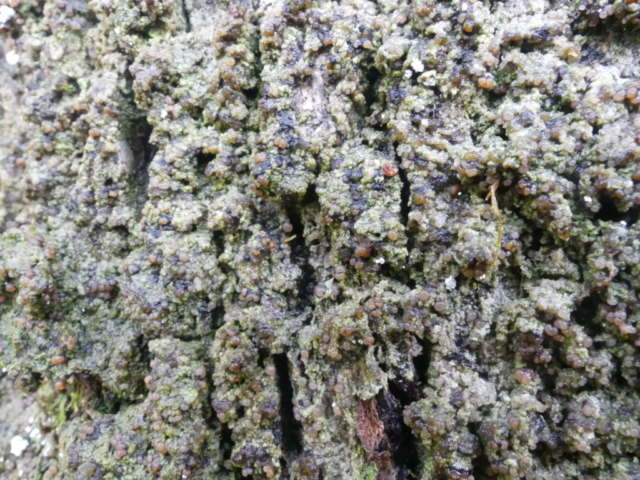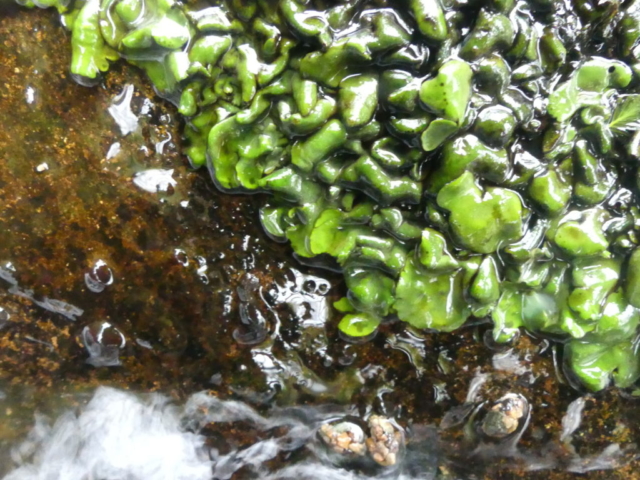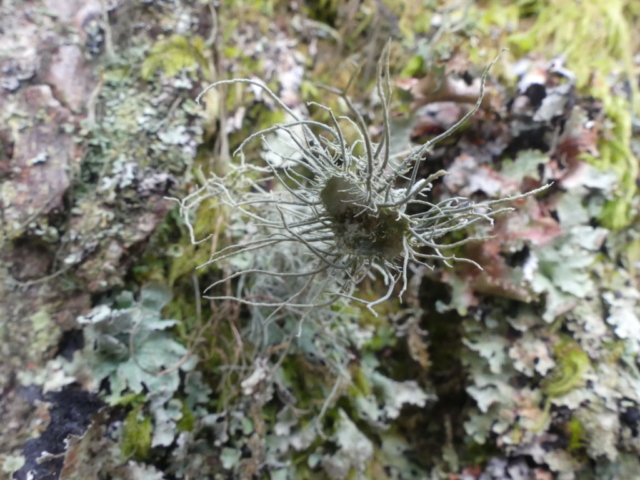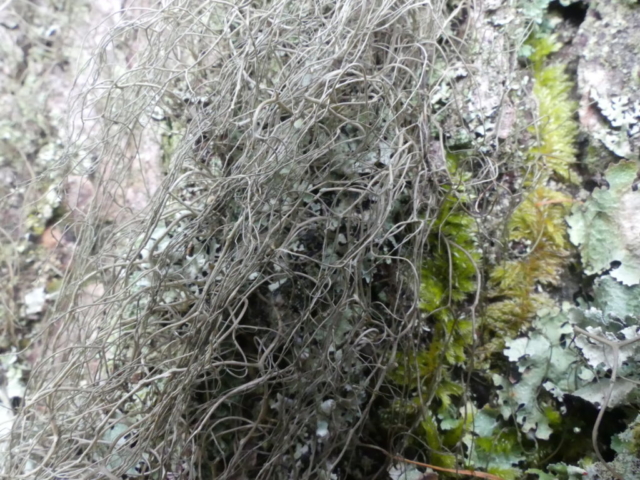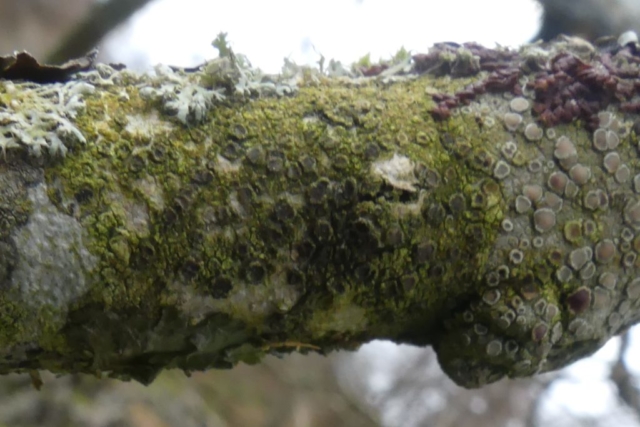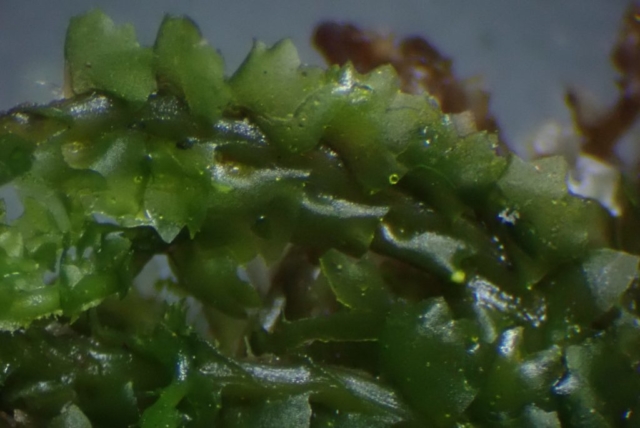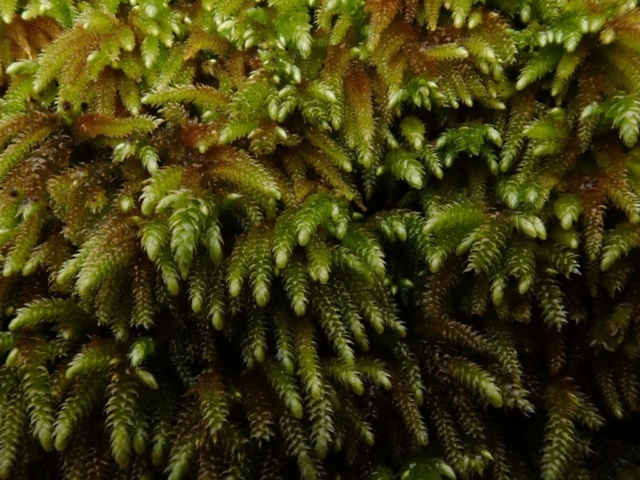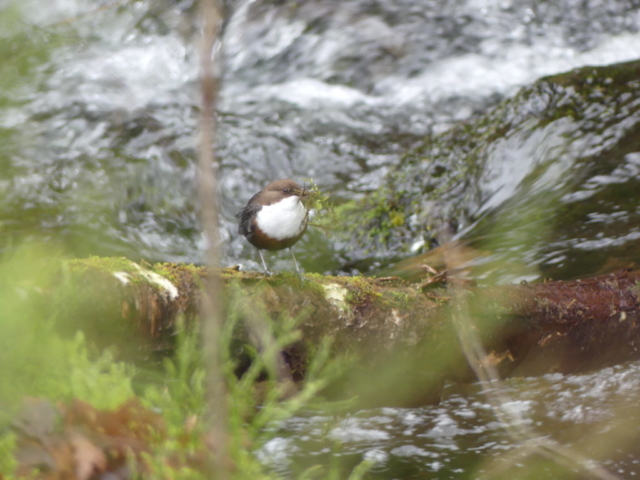Lichens
This month, there were no severe weather warnings, so the group trip to Tom Gill near Tarn Hows could go ahead. On the other hand, the forecast wasn’t great and the spreading Coronavirus pandemic was a concern… but in the end the nine of us who made the trip, including a couple of new participants, were treated to a pretty dry day, with a couple of glimpses of the sun.
For once, we were quick out of the car park: but only for about 50 metres to an old roadside ash pollard with impressive Peltigera horizontalis. After a while looking at that, and pondering the associated crusts, we gradually climbed through the Atlantic oakwoods. There was a lot of Ochrolechia androgyna, and impressive sheets of Hypotrachyna taylorensis. Some blue dots on a Parmelia species intrigued: are they Endococcus parmeliarum? We found the Thelotrema lepadinum and Arthonia cinnabarina listed in the SSSI citation, but couldn’t find the Lobaria pulmonaria that in 1970 had been “abundant on old Quercus”. Maybe the tree isn’t there any more.
On the other hand, on an oak in a damp hollow by a stream junction, there was prolific Mycobilimbia pilularis and Pannaria conoplea, as well as high up rosettes of Peltigera horizontalis. Something of the Lobarion community still lingers. The bryophyte section of the party managed to impress us with handsome woollywort (Tricholea tomentella) before finding Dermatocarpon luridum for us in the beck.
After lunch we carried on up through the wood, finding Bryoria fuscescens on larch, before heading out into the pasture area to the south. Trees there provided Cetrelia olivetorum, Collema flaccidum and some interesting species on ash. Wilson’s filmy fern (Hymenophyllum wilsonii) was found growing on a rock outcrop. The day’s count was over 60 species, with something for everyone: a further visit would almost certainly produce more.
Pete Martin
Bryophytes
The lower part of the wood was carpeted with typical atlantic oakwood species such as Rhytidiadelphus loreus, Thuidium tamariscinum, Isothecium myosuroides and Polytrichastrum formosum. Mature oaks had luxuriant wefts of Frullania tamarisci on their trunks. Closer inspection revealed other smaller liverworts such as Lepidozia reptans and Lejeunea cavifolia. Some of the oaks also had extensive patches of Scapania gracilis.
The beck and its tributaries offered a different assemblage of species. Thamnobryum alopecurum and Platyhypnidium riparoides were abundant on the rocks in the main beck with attractive patches of Hyocomium armoricum in the splash zone. At the top of one of the tributary flushes, the beautiful liverwort Trichocolea tomentella (Handsome Woollywort) was discovered, with Palustriella commutata nearby.
Damp shaded banks above the beck produced Hookeria lucens, Plagiochila asplenioides, Fissidens adianthoides and abundant Pellia epiphylla. A single patch of Porella arboris-vitae (Bitter Scalewort) was found growing at the base of an old ash tree next to the beck, and Plagiochila spinulosa was also recorded nearby.
The boundary wall was covered in common bryophytes amongst which the liverwort Barbilophozia barbata was found to be fairly frequent.
After lunch we moved on to the upper part of the wood. This is a steep west facing bank with an area of block scree mostly covered by mosses. Leucobryum glaucum was abundant here, together with Dicranum majus and Bazzania trilobata. Nowellia curvifolia, which had been surprisingly sparse in the lower part, was frequent here on dead wood.
A diversion into the adjacent field to look for Lobaria and other lichens produced a few additional species, including Campylopus atrovirens, Andraea rothii and Polytrichum piliferum on rock outcrops. Of more interest was the Hymenophyllum wilsonii (Wilson’s Filmy Fern) mentioned above, and the large patch of Pterogonium gracile at the base of a veteran ash tree. Altogether 73 species were recorded on the day.
Kerry Milligan
Photos by Chris Cant and Kerry Milligan:
